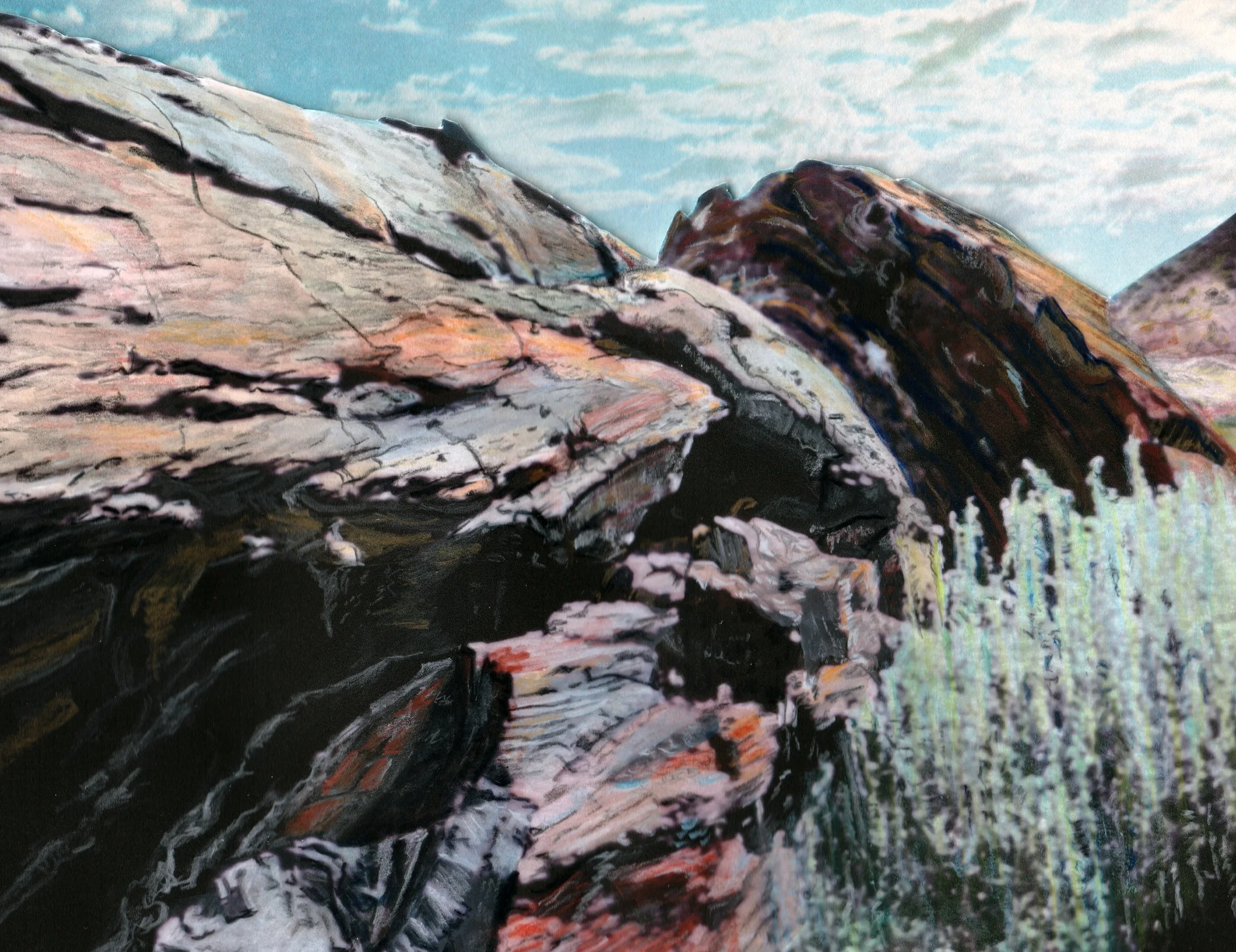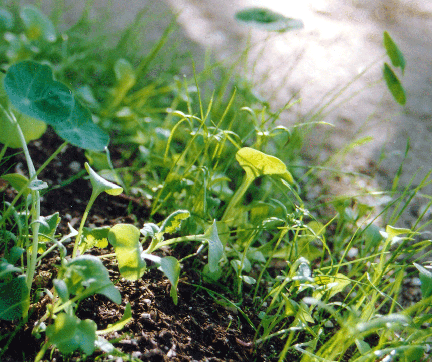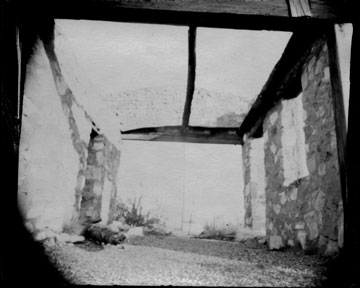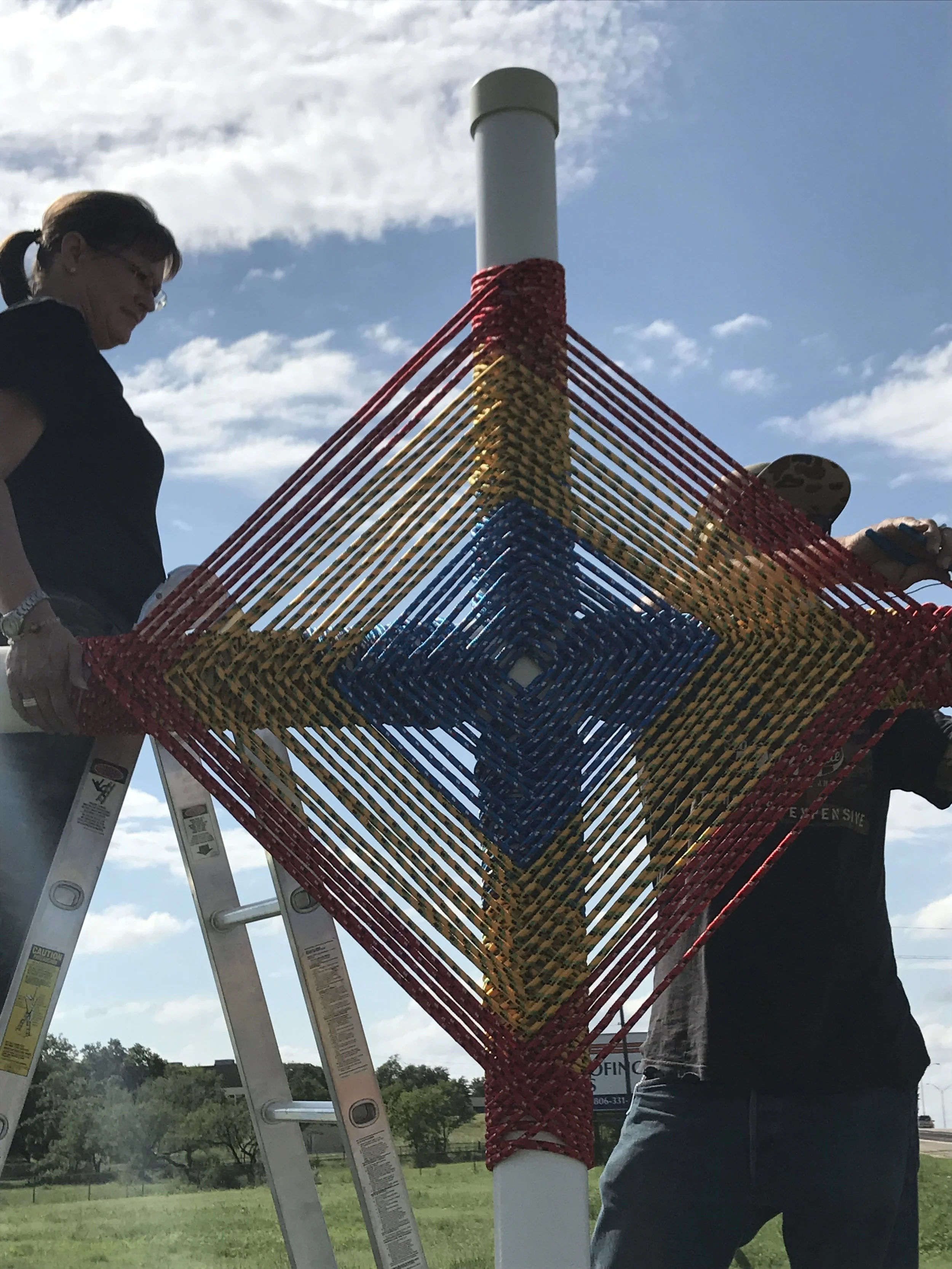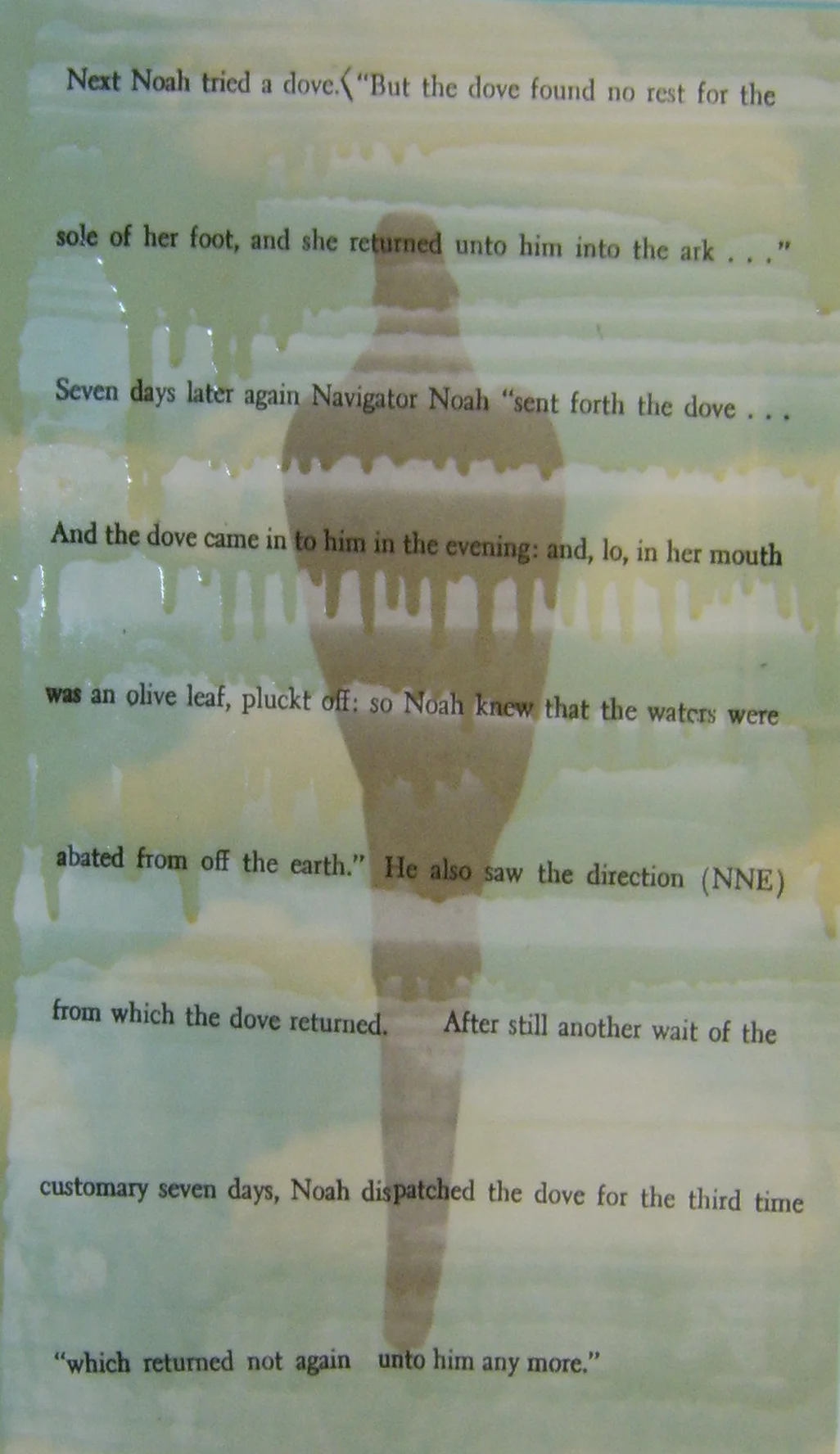Essay by Dr. Louisa McDonald
It began as a flurry of lures in mid-October. Small leaflets announcing 100 Messages Sent By a Crow, appeared one day scattered on hallway walls and clustered on the interior doors or the University of Nevada Art Department. Printed on heavy, sand-colored Canson drawing paper in rich, black ink, they had a retro, hand-lettered look and featured delicate drawings of either a weathervane pointing south-east, a partially stripped ear of corn, a country ham, or a short branch cut from a leafy tree, symbols of treasures such as a crow might fancy: seeds, wind and sky, or that a hungry, weary, dreaming man might long for: sustenance and home.
The next week these were replaced by longer, narrower, cartouche-like leaflets printed on the same sand-colored paper which announced:
United Catalysts
Present for your Benefit
100 Messages Sent By a Crow
Grant Hall Gallery
9AM to 5PM, Monday
October 31 only!
Playfully evocative and theatrical with their hint of spectacle, like circus handbills from an earlier century, they immediately raised one’s spirits and expectations. Coming soon, they seemed to promise, is an opportunity to step out of the ordinary, possibly even to change your life.
The now familiar, delicately drawn emblems of the elements: the ham, the ear of corn, the weathervane, the leafy branch, were joined b the image of The Crow herself. Far from the Old World crow, who is the harbinger of evil, a symbol of ill omen, the bearer of bad news, this crow seems kin to the indigenous hero/trickster of the Americas, - a jaunty figure in a top hat and long skirt from whose outstretched wings long feathers hung, and beneath whose feet printed in hand-lettered all capitals was this remarkable message:
You can communicate
With the Other Realm
Ask Questions/Leave Comments.
Send messages to the beyond.
Honor your Ancestors and those who have passed on.
Send Love to Lost Friends and Relations.
To Persons Obscure, Famous or Infamous.
To those you know and those you don’t.
To Spirits near and far.Bring your message
(on a small scrap of paper)
To the Grant Hall Gallery
9AM to 5PM Monday, October 31 only!
Monday, October 31, arrived. On one hand, just another ordinary day; on the other hand, Halloween, the Christian Eve of all Hallows, the pagan feast of Samhain, the day when the veil between the worlds is at its thinnest and most transparent and the Dead return to the land of the living. A day of witches, goblins, spirits and ghosts, shadowy night animals, bats, ravens, spiders, skeletons and jack ‘o lanterns, trick or treat –a good time to communicate with the spirit world; a good time for introspective Shamanistic journeys and personal vision quests. The Crow had arrived.
She was no fiction or figment of the imagination, but solidly present and gloriously real. Tall and stately, dressed in black. Beneath the top hat round, intelligent eyes peered over an enormous, sharp, blue-black beak. From the shoulders and sleeves of her closely fitted jacket dangled long, solitary feathers; two small, beaded and jeweled purses hung around her waist and jingling bells, benevolent warnings, were sewn onto her long skirt. Thus she worked, intensely focused all day, delivering messages from one spirit to another; she spun, her feathered wings and belled skirts flying; she rested, leaning her sleek black figure into the thick cushion of bushes as if into a crow’s nest. As soon as I caught a glimpse of her I knew I had to send a message.
Read more of Louisa McDonald's essay.
See the crow message fetish sculptures.








